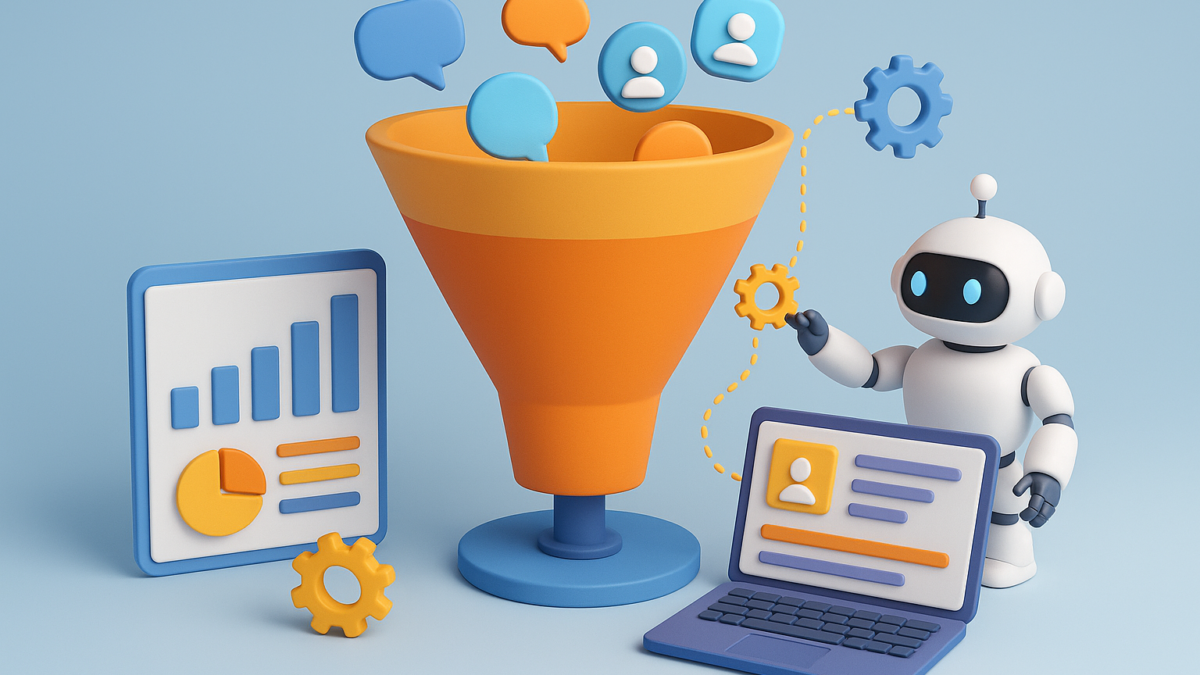Lead Generation in the Automation Era: Smarter, Faster, Better
Table of Contents
Introduction: A New Age of Lead Generation
In the past, lead generation was a manual, time-consuming process—cold calls, endless follow-ups, and spreadsheets filled with prospects. But in today’s automation era, technology has reshaped how businesses identify, engage, and convert leads.
Automation tools not only streamline repetitive tasks but also improve lead quality by delivering data-driven insights. For businesses aiming to stay competitive, adopting automated lead generation strategies is no longer optional—it’s essential.
Why Automation Matters for Lead Generation
B2B buyers have changed. They expect fast responses, personalized interactions, and frictionless digital experiences. Manual approaches simply can’t keep up.
Key benefits of automation in lead generation include:
- Speed – Capture and qualify leads instantly.
- Personalization – Tailor outreach at scale with dynamic content.
- Accuracy – Eliminate errors caused by manual data entry.
- Efficiency – Free up sales teams to focus on closing deals, not chasing leads.
Step-by-Step Guide: Building an Automated Lead Generation Engine
1. Optimize Lead Capture Forms
Modern tools allow you to create smart forms that adapt based on visitor behavior. This reduces drop-offs and ensures only high-quality leads enter your funnel.
2. Deploy AI-Powered Chatbots
Chatbots engage visitors 24/7, answering questions and guiding prospects toward resources. They also qualify leads by asking key questions in real time.
3. Use Lead Scoring and Segmentation
Automation platforms score leads based on demographics and behavior. This helps your sales team prioritize high-intent leads while nurturing others in the background.
4. Automate Nurture Campaigns
Email workflows, retargeting ads, and personalized content nurture prospects until they’re sales-ready. The goal is to stay top-of-mind without manual effort.
5. Integrate CRM with Marketing Automation
Connecting your CRM ensures smooth data flow between marketing and sales teams. This alignment reduces lead leakage and improves conversion rates.
Real-World Example: HubSpot’s Automation Impact
HubSpot’s marketing automation platform enables businesses to build workflows that nurture leads based on behavior. A SaaS company using HubSpot saw a 45% increase in qualified leads by automating email follow-ups and lead scoring—demonstrating the ROI of automation-driven lead gen.
Challenges to Watch Out For
While automation offers huge potential, it’s not without pitfalls:
- Over-automation – Too many automated emails can feel impersonal.
- Data dependency – Bad data leads to poor results.
- Tool complexity – Learning curves may slow adoption.
Balancing automation with human interaction is key to sustainable success.
Future of Lead Generation in the Automation Era
Looking ahead, we’ll see:
- AI-driven personalization – Hyper-relevant messaging for each prospect.
- Predictive analytics – Forecasting which leads are most likely to convert.
- Voice and conversational AI – Natural, real-time lead engagement.
Companies that embrace these trends will stay ahead in the competitive B2B landscape.
Internal & External Resources
- Learn more about boosting your funnel with our B2B Lead Generation Services.
- Explore this insightful Whitepaper on Lead Generation for industry benchmarks and strategies.
Final Thoughts
The automation era has redefined lead generation. By combining technology with strategy, businesses can capture, nurture, and convert leads faster and smarter than ever before.
Automation doesn’t replace human connection—it enhances it, ensuring that sales teams focus on what they do best: building relationships and closing deals.
Call-to-Action
Ready to scale your lead generation with automation?
👉 Partner with our experts to design automation-powered strategies that bring in high-quality B2B leads.





